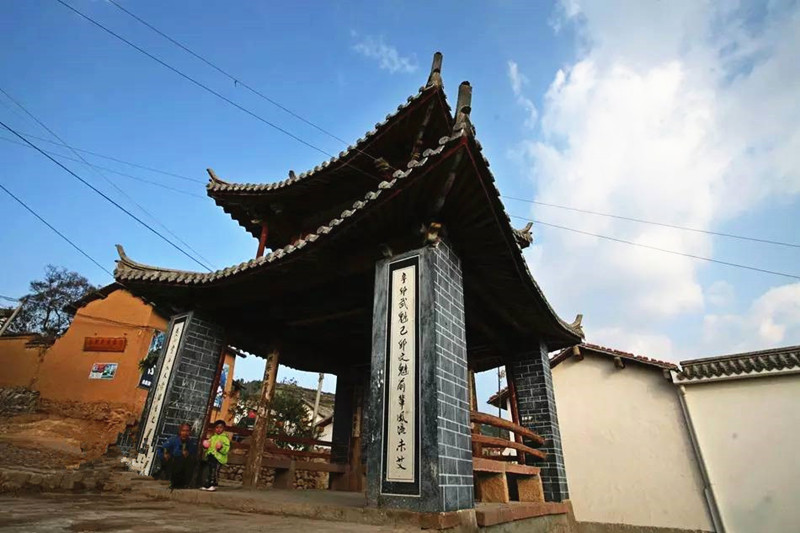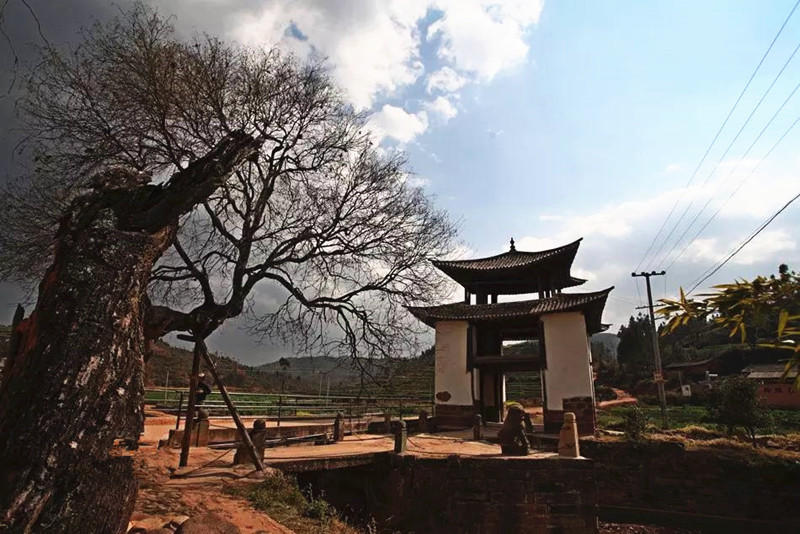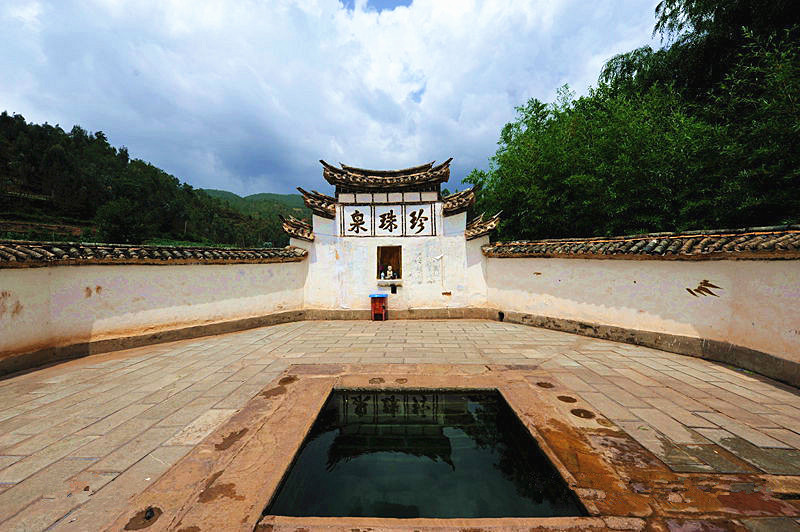
Mizhi Old Town Scenic Area in Midu County, Dali
Mizhi Town (密祉镇) is a township under the jurisdiction of Midu County (弥渡县), part of Dali Bai Autonomous Prefecture (大理白族自治州), Yunnan Province (云南省). It is located in the southwestern part of Midu County, bordering Juli Town (苴力镇) to the east, Nanjian Town (南涧镇) in Nanjian Yi Autonomous County (南涧彝族自治县) to the south, Weishan Yi and Hui Autonomous County (巍山彝族回族自治县) to the west, and Yinjie Town (寅街镇) to the north. It is situated 30 kilometers from the Midu County seat and covers a total area of 132.05 square kilometers.
As of the end of 2019, Mizhi Town had a registered population of 16,473.
In 2014, Mizhi was upgraded from a township (乡) to a town (镇). As of June 2020, it governs six administrative villages. The town government is located at No. 5 Dasi Street (大寺街).
By the end of 2019, the town had three industrial enterprises and eight general stores or supermarkets with an operating area exceeding 50 square meters.

Historical Background
In the second year of the Yuanfeng era of the Western Han Dynasty (109 BCE), after Emperor Wu of Han launched his campaign against the Southwestern Barbarians, settlers from inland Han regions began to migrate and settle in the area.
During the Nanzhao Kingdom period in the Tang Dynasty, Mizhi was a vital stop on the “Kainan Ancient Post Road” (开南古驿道), also known as the Ancient Tea Horse Road (茶马古道).
In the Ming and Qing Dynasties, Mizhi was part of the 15th li of Zhaozhou. After the establishment of Midu County, it was under Chengnan Township 2.
- In 1931 (Republic of China Year 20), it became the Fifth District
- On February 1, 1940, Mizhi Township (密祉乡) was officially established
- In 1950, it belonged to District 3
- In 1956, the district was abolished and Mizhi Township was established
- In 1958, it was merged with Juli and Yinjie into the Wuyi Commune as the Mizhi Management Area
- In early 1961, Mizhi Commune was established
- In late 1962, it became part of Juli District
- In 1970, it belonged to Juli Commune
- In 1984, it was again under Juli District
- In March 1988, Mizhi Township was re-established after being separated from Juli
- In 2014, Mizhi Township was officially upgraded to Mizhi Town
Geographical Location
Mizhi Town lies in the southwestern part of Midu County. It is:

- East of Juli Town (苴力镇)
- South of Nanjian Town (南涧镇)
- West of Weishan Yi and Hui Autonomous County (巍山彝族回族自治县)
- North of Yinjie Town (寅街镇)
- 30 kilometers from the county seat
The total area of the town is 132.05 square kilometers.
Topography
Mizhi Town is surrounded by mountains. The Yaxi River (亚溪河) flows through Mizhi Basin. The highest point is Taiji Peak (太极顶), at an elevation of 3,061.4 meters, while the lowest point is at Langqing (郎箐), at 1,700 meters above sea level.
Climate
Mizhi Town lies in the mid-subtropical monsoon climate zone, featuring:
- Average annual temperature: 14.5°C to 15.3°C
- Annual precipitation: 850 mm
Climate varies significantly by elevation:

Taiji Mountain (太极山) has a cool temperate climate, with low temperatures, high precipitation, frequent frost, and occasional snow.
- Avg. temp: 9.1°C
- Avg. annual sunshine: 1,900 hours
- Avg. annual rainfall: 1,865 mm
Mizhi Basin (密祉坝) lies in the north subtropical zone
- Avg. temp: 14.6°C
- Avg. rainfall: 850 mm
- Avg. sunshine: 2,058.5 hours
Hydrology
The major water systems in Mizhi Town include:
One stream originates from Longjiao Mountain (龙角山) on the southern slope of Taiji Mountain, forming the Yaxi River (亚溪河), which flows through Langqing (郎箐) into the Pixiong River (毗雄河).
Another stream originates from the northern slope of Taiji Mountain, flowing into Xinglong River (兴隆河) and then into the Lishuying Reservoir (栗树营水库).
Natural Disasters
The main natural disasters in Mizhi Town include:
- Floods
- Winter and spring droughts
- Low-temperature cold damage
- Landslides and mudslides caused by heavy rain
Natural Resources
Mizhi Town has identified underground mineral resources such as copper, lignite, and kaolin (china clay).
Erlang Copper Mine (二郎铜矿): small reserves, high grade
Xinglong Village (兴隆村): large reserves of kaolin, already under development
As of 2011, the total cultivated land in the town was 8,030 mu (approx. 535 hectares).
Intangible Cultural Heritage
Mizhi Town is the birthplace of the world-renowned folk song Xiao He Tang Shui (《小河淌水》). It is also a cradle of nationally recognized intangible cultural heritage, particularly Midu folk songs and lantern dances (花灯).
Recognized as the “Hometown of Chinese Lantern Art” (中国花灯艺术之乡), Mizhi hosts over 30 lantern performance troupes totaling more than 5,000 performers every year during the Lantern Festival on the 15th day of the first lunar month. Performances include:
- Twin dragons playing with a pearl
- Double lions dancing
- Phoenix guiding the Qilin
- Song and dance performances
- Beauties rowing boats
Scenic Attractions
Mizhi Town is home to several notable scenic and cultural sites, including:
Taiji Mountain (太极山) – provincial-level scenic area
Mizhi Grand Temple (密祉大寺)
Wensheng Street (文盛街) – a nationally recognized historic and cultural village
Yin Yigong’s Former Residence (尹宜公故居)
Osmanthus Ravine (桂花箐)

Pearl Spring (珍珠泉)
Local Specialties
Famous local products of Mizhi Town include:
- Mizhi Tofu (密祉豆腐)
- Red Snow Pears (红雪梨)
- Wild edible mushrooms
- Morel mushrooms (羊肚菌)
- Honey
- Dengzhanxixin (灯盏细辛), a medicinal herb

 7 Days GolfingTour
7 Days GolfingTour
 8 Days Group Tour
8 Days Group Tour
 8 Days Yunnan Tour
8 Days Yunnan Tour
 7 Days Shangri La Hiking
7 Days Shangri La Hiking
 11 Days Yunnan Tour
11 Days Yunnan Tour
 6 Days Yuanyang Terraces
6 Days Yuanyang Terraces
 11 Days Yunnan Tour
11 Days Yunnan Tour
 8 Days South Yunnan
8 Days South Yunnan
 7 Days Tea Tour
7 Days Tea Tour
 8 Days Muslim Tour
8 Days Muslim Tour
 12 Days Self-Driving
12 Days Self-Driving
 4 Days Haba Climbing
4 Days Haba Climbing
 Tiger Leaping Gorge
Tiger Leaping Gorge
 Stone Forest
Stone Forest
 Yunnan-Tibet
Yunnan-Tibet
 Hani Rice Terraces
Hani Rice Terraces
 Kunming
Kunming
 Lijiang
Lijiang
 Shangri-la
Shangri-la
 Dali
Dali
 XishuangBanna
XishuangBanna
 Honghe
Honghe
 Kunming
Kunming
 Lijiang
Lijiang
 Shangri-la
Shangri-la
 Yuanyang Rice Terraces
Yuanyang Rice Terraces
 Nujiang
Nujiang
 XishuangBanna
XishuangBanna
 Spring City Golf
Spring City Golf
 Snow Mountain Golf
Snow Mountain Golf
 Stone Mountain Golf
Stone Mountain Golf














